Introduction on Helichrysum Essential Oil
“Immortelle”, “everlasting flower”: Just a few other names for the Latin word helichrysum. The word helichrysum comes from the Greek word "helios" which means sun and "chrysos" which means gold. That’s no surprise considering the lovely golden blossoms it exhibits. So what’s the big deal about this essential oil? In this article, we'll explore all the remarkable benefits and uses, and find out just why helichrysum is so sought after.
1. What is Helichrysum essential oil
Helichrysum essential oil is one of the most expensive oils derived from a flowering plant. It comes from the extraction of oils from the genus helichrysum.
It's used in aromatherapy, skincare, and as a natural alternative to some medicines because of its antibacterial, antifungal, and antimicrobial properties.
2. What does it smell like?

The aromatic oil of helichrysum plants is somewhat difficult to explain. One may describe it as an earthy, exotic, and spicy scent. “Curry Plant” is one popular name for helichrysum because the strong fragrance of its leaves smells a lot like curry powder.
Why is Helichrysum so expensive?
If you do a little price checking with some reputable brands, you’ll find that Helichrysum essential oil is on the high side; anywhere from $10-$16 per ml for pure essential oil.
Its high price is largely due to the number of plants required to produce it. Roughly a ton of plant matter yields just 1 liter of essential oil!
Then when you factor in sustainable farming practices (the flowers are normally harvested by hand), international shipping, as well as freight costs, it’s easy to see why it’s so expensive. Not to mention it has the longest shelf life when you compare it to other oils.
3. Which plant is Helichrysum essential oil extracted from?

Helichrysum essential oil comes from the different species of the genus Helichrysum which belongs to the Asteraceae family and consists of a few hundred species. The most popular species that essential oil comes from is Helichrysum Italicum (H. italicum). It grows naturally on dry, rocky, or sandy ground in the Mediterranean and southern Europe. Essential oils are derived from the helichrysum flowers and the green parts of the plant, like the leaves and stems.
This plant has earned some fascinating titles along the way and for good reasons. Some of those names include:
-
Curry Plant- as mentioned above, Helichrysum smells a lot like curry powder but despite this, the plant has nothing to do with this mixture of spices nor with the Curry Leaf Tree.
-
Italian Strawflower- this name was originally given to Helichrysum bracteatum but is now used interchangeably between all the helichrysum flowers.
-
“Everlasting flower” or “immortelle”- the exact reason that we refer to helichrysum as “everlasting flower” or “immortelle” is unknown but there are two theories:
-
Theory #1- because the dried flowers of the bright yellow blossoms retain their form and color for an exceptionally long time.
-
Theory #2- because of its traditional use in restoring the skin's elasticity and reviving a youthful complexion.
-
The extraction process of Helichrysum essential oil
The process of extraction ensures that the key ingredients are concentrated and all the therapeutic properties are preserved.
The most common method of extraction of Helichrysum essential oils is steam distillation from the tiny, delicate flowers of the plant.
During this process, manufacturers place the flowers in a chamber and pump steam which allows the release of the oils. Next, there is a transfer of oil and steam to the condenser and an action of cooling transforms the steam into water and the oil then separates.
Because only a small amount of oil is yielded with each flower, it takes a lot of plant material just to make a small amount of essential oil.
What are the main chemical constituents of Helichrysum essential oil?
The chemical composition of Helichrysum italicum varies depending on which countries and parts of the world it comes from.
In a study in 2016, a group of researchers from the University Ferhat Abbas Sétif in Algeria, and the University of Murcia in Spain found that when collected from the North of Algeria, Helichrysum Italicum contained a rich and complex profile of these naturally occurring compounds:
-
Camphene
-
Eugenol
-
Linalool
-
Terpinene- 4- ol
-
B- diketones
-
Myrcene
-
Italidone
-
Geraniol
-
Limonene
-
Nerol
-
Neryl Acetate
-
B-pinene
-
Alpha-pinene
-
Y curcumene
4. What are the benefits of Helichrysum essential oil?

This oil should be a key ingredient in everyone's holistic first aid kit! Some common uses for Helichrysum essential oil in traditional medicine include allergy relief, colds, cough, skin, liver and gallbladder disorders, inflammation, infections, healing wounds, and sleeplessness.
Because of limited studies in humans, some of these claims aren’t scientifically backed yet. Here are some of the known benefits:
Helps against allergies
10-30% of the world population suffers from allergies each year and 1 in 5 people are affected by allergic contact dermatitis which is a rash on the skin caused by contact with an allergen. Evidence from this study confirms that helichrysum may be able to reduce the symptoms of allergic reactions -- particularly because allergic contact dermatitis causes inflammation of the skin.
When the body reacts to an allergen, inflammation occurs which is typically the cause of allergy symptoms so the anti-inflammatory properties alone in H. italicum may alleviate allergy symptoms.
Reduces inflammation
The most studied ability of Helichrysum Italicum plant or isolated compounds is the potential to reduce or eliminate inflammation. Studies of H. italicum plant go back to the 1940s to an Italian physician named Leonardo Santini but unfortunately, these studies were largely overlooked at that time.
According to a 2002 study on mice at the University of Valencia, Spain, H. italicum showed promising anti-inflammatory and antioxidant properties thanks to a compound called Arzanol which is probably the most distinct compound in this oil. Tiliroside, an active flavonoid found in H. italicum exerts multiple biological effects including anti-inflammatory, antimicrobial, antioxidant, and antitumor activities.
The anti-inflammatory properties of helichrysum oil play a part in the majority of its benefits.
Treats colds and reduces phlegm
Scientific studies done in 2021 show that helichrysum italicum can effectively be used to treat cough and reduce phlegm thanks to its antitussive and expectant qualities.
It helps loosen phlegm and doesn't allow new phlegm to be deposited. This, in turn, provides much-needed relief from a persistent cough.
Cease or help slow growth of candidiasis (yeast infection)
Research from a 2018 lab test shows the essential oil from Helichrysum Italicum slows, and in some cases stops the growth of candida thanks to the antibacterial qualities.
Helps heal wounds faster
The ability of helichrysum to heal wounds and protect skin seems to be its best-documented health benefit. More studies in this area are needed because mechanisms for use are unclear at this time.
Infection sets up if a wound doesn’t heal properly. The antimicrobial and antibacterial properties in Helichrysum oil help prevent these skin infections which speeds up the healing process.
Is Helichrysum oil good for scars?
One well-known traditional use of Helichrysum essential oil is to fade or reduce scars. Thanks to its antioxidant properties, it helps prevent scarring by regenerating new cells and preventing the accumulation of free radicals.
-
Cherry Blossom & Jasmine Spa Bathtub Set
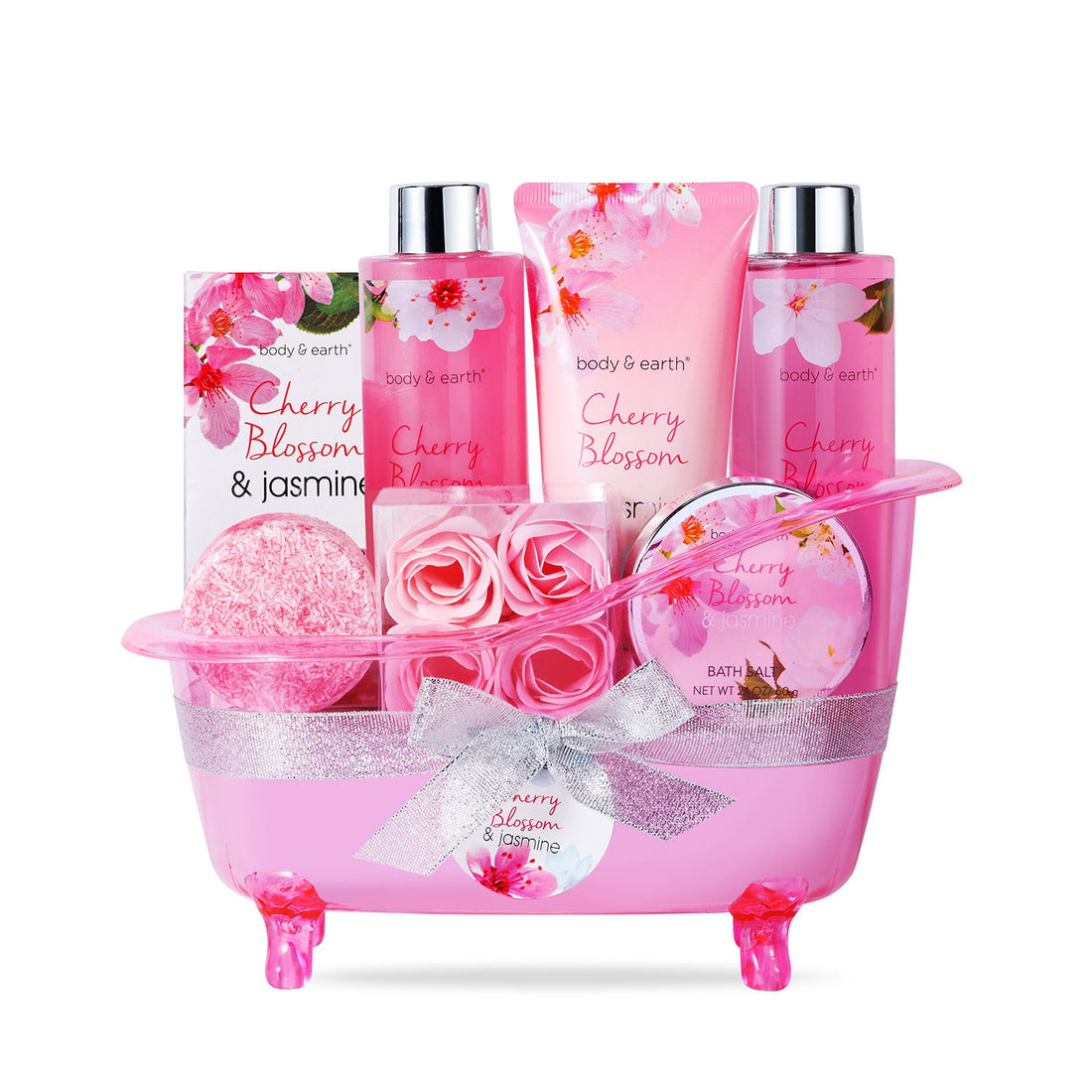 Cherry Blossom & Jasmine Spa Bathtub Set
Cherry Blossom & Jasmine Spa Bathtub Set- Regular price
-
$45.99 - Regular price
-
$44.99 - Sale price
-
$45.99
-
Vanilla Fashion Bath Set Tote
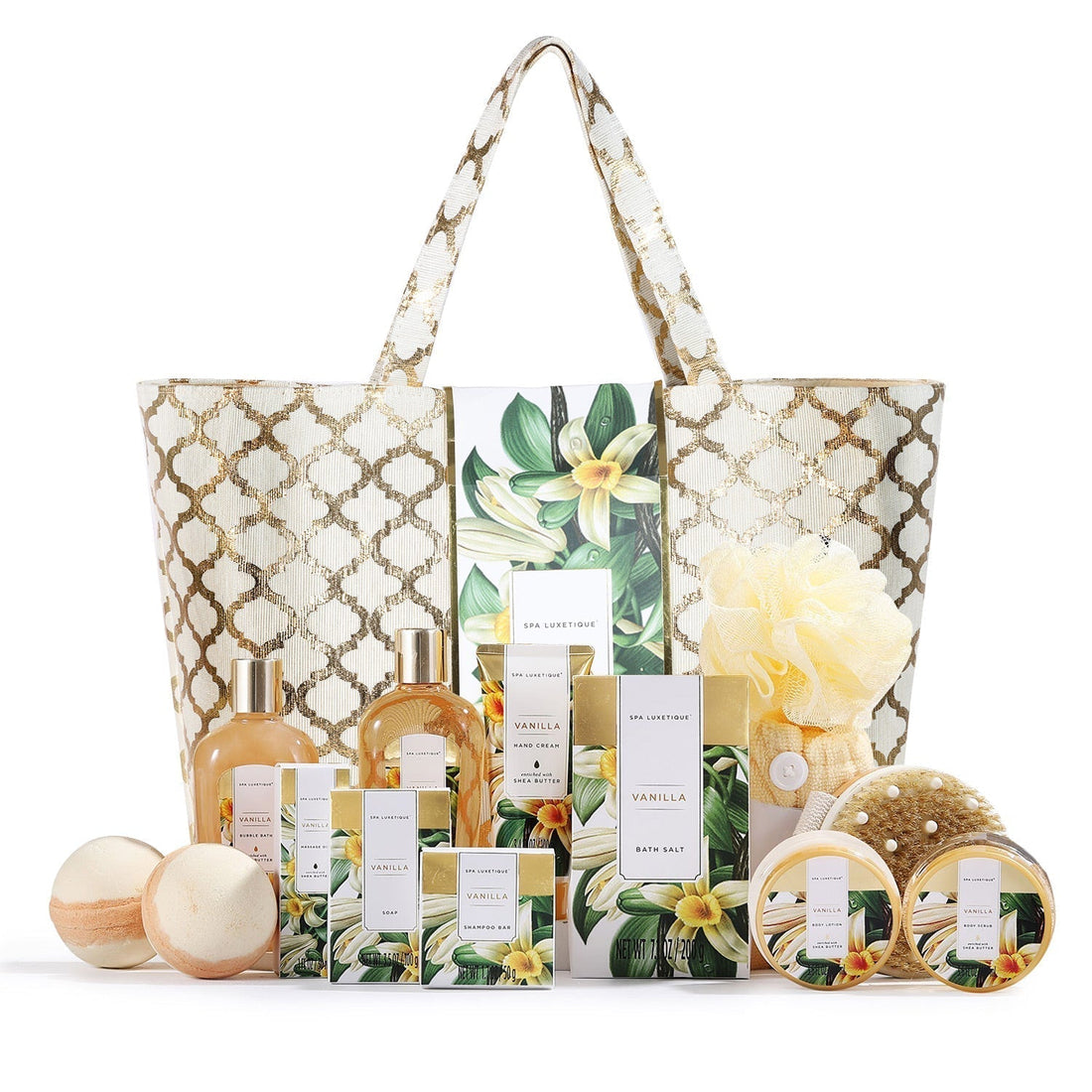 Vanilla Fashion Bath Set Tote
Vanilla Fashion Bath Set Tote- Regular price
-
$72.99 - Regular price
-
- Sale price
-
$72.99
-
White Jasmine Fashion Bath Set Tote
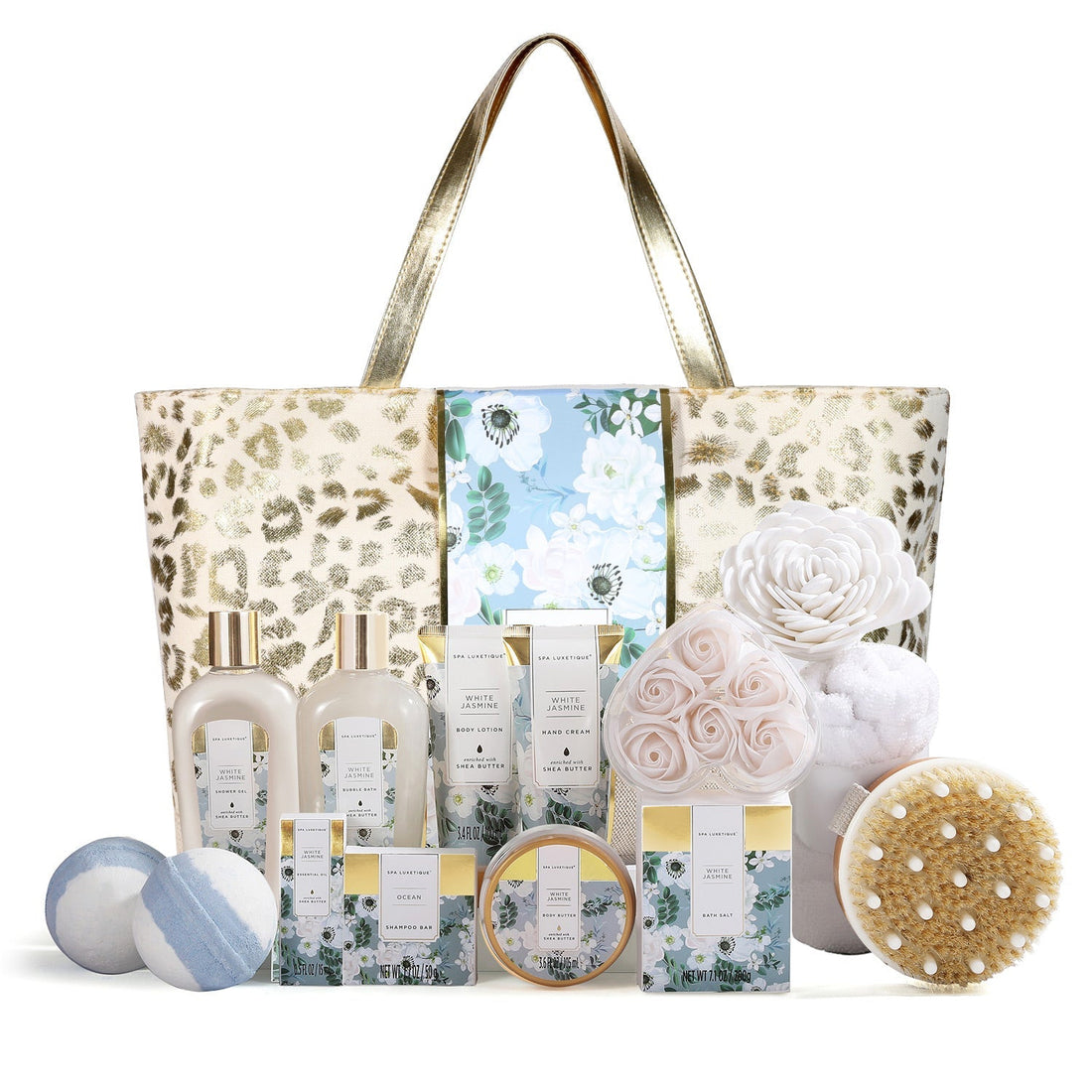 White Jasmine Fashion Bath Set Tote
White Jasmine Fashion Bath Set Tote- Regular price
-
$47.99 - Regular price
-
$72.99 - Sale price
-
$47.99
-
Lavender Spa Bathtub Set
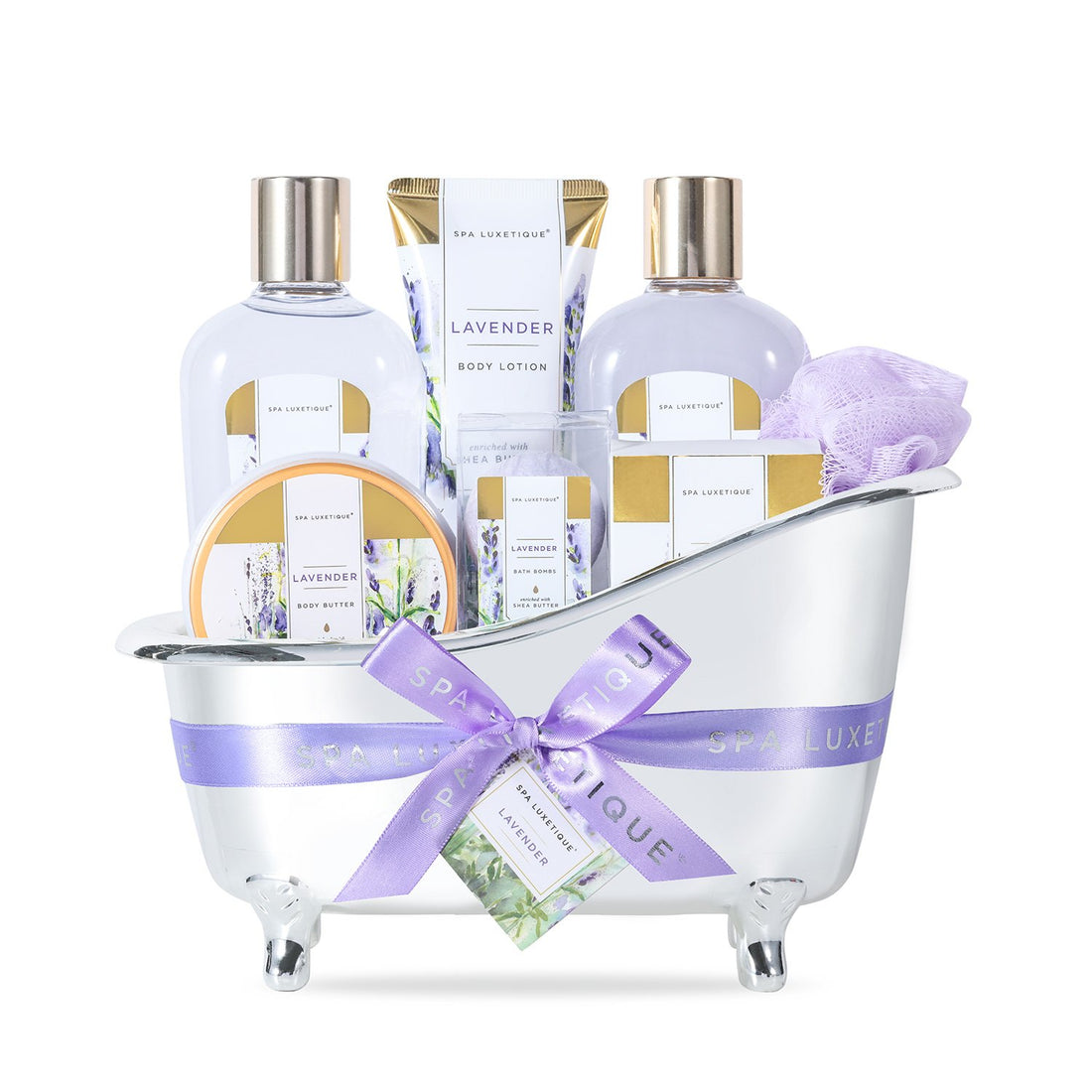 Lavender Spa Bathtub Set
Lavender Spa Bathtub Set- Regular price
-
$45.99 - Regular price
-
$44.99 - Sale price
-
$45.99
-
Lavender Fashion Bath Set Tote
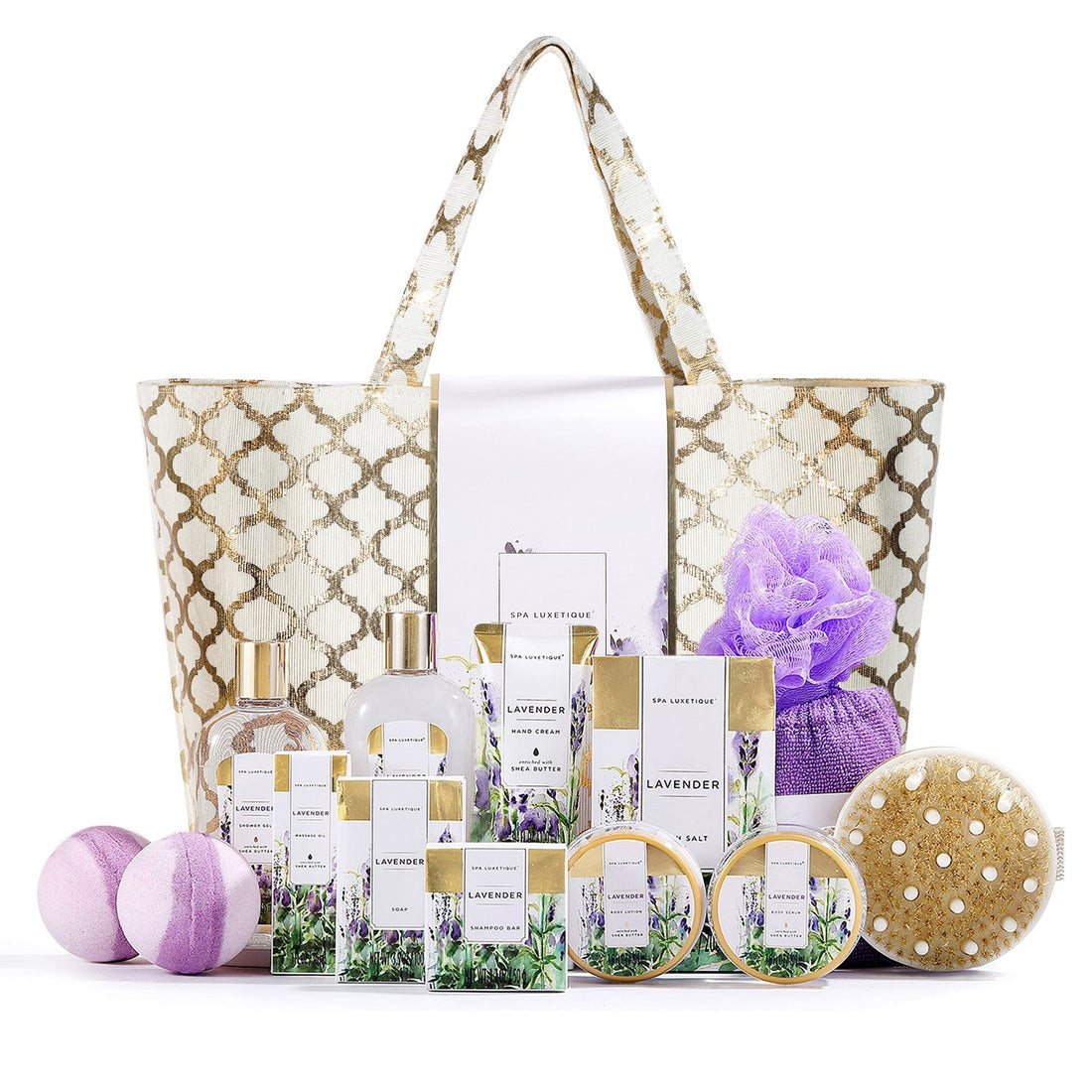 Lavender Fashion Bath Set Tote
Lavender Fashion Bath Set Tote- Regular price
-
$65.99 - Regular price
-
$0.00 - Sale price
-
$65.99
Rejuvenates both skin and hair
Helichrysum essential oil works wonders at maintaining good skin health by rejuvenating dull, dry skin, keeping the skin hydrated throughout the day, and blocking harmful UV rays which may cause sunburn, skin cancer, and other skin irritations. Simply blend it with lavender and a carrier oil (like coconut oil) and massage the combination into the skin to receive these benefits.
Plus, it works wonders on the hair! If you're struggling with dry, coarse hair, Helichrysum oil is what you need since it improves hair texture as well as prevents hair loss and graying. Take advantage of these benefits simply by dropping some oil into your favorite shampoo or conditioner and using it as normal.
Is Helichrysum good for wrinkles?
This oil has long been believed to restore a youthful look by controlling and effectively reducing the appearance of fine lines and wrinkles on the face. It's gentle enough to apply directly to the spots on the skin that need it most.
Always do a small patch test before applying any essential oil to the skin undiluted for the first time to make sure there are no allergic reactions to the oil.
Helps for burnout and exhaustion
When you hit a slump and nothing seems to be helping you out, most people don’t think to look to essential oils for a quick mental boost.
A study conducted by The Journal of Alternative and Complementary Medicine suggested that the inhalation of helichrysum works to reduce feelings of mental fatigue and burnout although further research is needed. Other essential oils to pair with helichrysum for this purpose include peppermint and basil. Make burnout a thing of the past; simply place drops into your diffuser, inhale deeply, and slowly exhale. Truly, a breath of fresh air!
Does Helichrysum work for tinnitus?
Tinnitus is a nervous system disorder that causes swelling and/or nerve problems in the ear or neck. More than other oils, Helichrysum is most often touted for its ability to relieve this condition. It's thought to help tinnitus because of its antibacterial, anti-inflammatory, choleretic, and antispasmodic properties. To date, there isn't much evidence to support this use.
Other Helichrysum oil benefits worth mentioning
Other benefits and medicinal purposes of Helichrysum oil that you must know include:
Fights malaria
In one test-tube study conducted in 2011, researchers found antimalarial activity in Helichrysum gymnocephalum essential oil, which is derived from a type of helichrysum plant.
Fights gallbladder disorder
A group of researchers at the Institute for Medicinal Plant Research in Belgrade, Serbia found scientific data that one species of helichrysum, Helichrysum arenarium (L.) Moench can help reduce gallbladder inflammation and pain associated with the condition.
Mood uplifter
Helichrysum essential oil contains a chemical group called esters which are known to be calming and relaxing and help to relieve stress and anxiety. By doing so, it's effective at balancing out your mood.
Eases constipation
This essential oil is often used to treat digestive disorders mainly caused by liver dysfunction. Not only does it help ease constipation, but it also helps with stomach aches, acid reflux, bloating, and intestinal spasms.
Improves heart health
Helichrysum has been used for centuries in traditional medicine to improve the functions of the heart.
A group of researchers from the University of Durban in 2008 found that the hypotensive action of Helichrysum improves the condition of blood vessels by decreasing inflammation, increasing smooth muscle function, and lowering high blood pressure.
This in vivo/in vitro animal study researched the cardiovascular effects of Helichrysum oil and their finds support the possible use in high blood pressure management and the protection of heart health. Proving the traditional use of this oil valid.
Is Helichrysum good for varicose veins?
Yes! This oil works wonders for the appearance of varicose veins. Its anticoagulant effects help blood flow properly, reducing the size of the veins while the anti-inflammatory properties work to calm the tissue and prevent new ones from forming.
Claimed health benefits that are yet to be proven by science
Despite the long list of healing benefits of Helichrysum essential oil, some of the traditional uses haven't been studied enough to prove the oil's effectiveness in these areas.
Liver boost:
This essential oil is commonly used throughout parts of Europe to treat various liver diseases but there is presently no scientific proof that this works. That doesn’t necessarily mean it isn’t an effective treatment, it just means scientific research is needed to back this claim.
Treats acne:
It’s a common belief that Helichrysum essential oil is a powerful treatment for acne blemishes and acne scars because of the oil's antibacterial and anti-inflammatory properties.
Research from one study found that the methanolic extract of Helichrysum odoratissimum (L.) Sweet (or HO-MeOH) exhibited potent antimicrobial activity against Cutibacterium acnes. Further studies are needed to confirm or deny that the same is true for the essential oil.
Helps insomnia:
In traditional medicine, helichrysum is widely used for the treatment of insomnia but there is currently no scientific evidence to prove this potential benefit.
5. How to use Helichrysum oil?

Helichrysum essential oil can be used topically on the skin, internally (when using USDA-approved food-grade essential oils), and as aromatherapy through inhalation.
Topically- there are many options to enjoy with the topical use of this oil. You may choose to add a few drops to your daily skin care routine, dilute with a carrier oil, or add full strength to your skin for beauty, anti-aging, and pain-relieving benefits.
Internally- in a 2021 study, scientists from the University of Primorska, Izola, Slovenia found that Helichrysum Italicum is safe to use internally. If you decide to use this method, make sure you choose an essential oil that is USDA food grade since you never know if you’re dealing with pure essential oil or a dilution. Be sure to follow the instructions on the label or the advice of a licensed holistic health professional.
Inhalation- aromatherapy is the most popular method of use for Helichrysum essential oil. For this method, an essential oil diffuser is the best way to receive benefits however, if you don't have access to a diffuser, simply inhale it from the bottle.
Can I use Helichrysum oil on my face?
Helichrysum essential oil has many skincare benefits. When applied topically, it's used to promote healthy skin-cell regeneration and a youthful complexion, and it's known for reducing dark spots and discoloration. It only makes sense to use it on the face.
After a skin patch test, use 2-4 drops of undiluted oil on the desired area or dilute it in a carrier oil. Be careful around the eyes and other sensitive areas on the face.
6. What are the side effects of Helichrysum oil?
Although this oil is considered non-toxic and non-irritant, there is always a possibility that overuse can lead to skin sensitization, contact dermatitis, and other complications.
Since helichrysum oil is an anticoagulant, it's not recommended for people that have just undergone surgery or people who are prone to internal hemorrhaging.
Those with gallstones and blocked bile ducts are advised against using helichrysum since, in rare cases, it can trigger colic cramps and stimulate bile flow.
Is it safe to use Helichrysum oil during pregnancy?
Helichrysum oil is generally considered safe for use during pregnancy. In fact, it has benefits specifically useful for your body when you're pregnant. Some of these benefits include:
Reducing the appearance of stretch marks- Helichrysum essential oil is known for reducing the appearance of stretch marks.
This oil works perfectly applied directly to the affected area, diluted in a carrier oil, or combined with other essential oils to maximize beneficial effects. Lavender and frankincense oil team perfectly with Helichrysum oil for diminishing stretch marks during pregnancy. Just combine all the ingredients mentioned with coconut oil and gently massage into the skin.
Relieving pain associated with pregnancy
Pain is a common occurrence during pregnancy. By blending Helichrysum oil with peppermint, chamomile, eucalyptus, and lavender, you can make an excellent massage oil for quick relief of those pesky pregnancy aches and pains.
Is Helichrysum oil safe for kids and babies?
Helichrysum oil is one oil you never want to be without if you have children. There are so many things that this oil can do and it's gentle and soothing enough to use topically for kids ages 3 and up when diluted.
It's extremely important, however, to use caution. Always do a patch test on your child before using it on larger areas because as mentioned above, some people react to certain essential oils and it could cause skin irritation. Naturally, a kid's skin is more sensitive than adults.
2019 scientific studies, conducted at the University of Bari in Bari, Italy found that the most frequent cause of contact allergy in kids is fragrances. This study also highlights the importance of patch testing in kids and babies.
Does Helichrysum interact with any drugs or medications?
According to a 2002 animal study along with research from 2010 on human cells, helichrysum may potentially stop some liver enzymes from properly working. This means there's a possibility that it may interact with medications that are metabolized by these particular liver enzymes.
7. Is there any substitutes for Helichrysum essential oil?
Depending on the intended use, other essential oils can stand in the place of helichrysum oil. Choices include:
Lavender: thanks to its antibacterial components, calming properties, and the gentle nature of the oil, lavender makes a great substitute for helichrysum oil.
If you're looking for something relaxing to help with mental fatigue, try this Lavender Spa Bathtub Set from bodyandearth! Considering all that this bath set offers, you can't go wrong.
Sandalwood: Sandalwood is a perfect option for managing stress and enhancing mental clarity making it a wonderful substitute for Helichrysum essential oil.
Ylang ylang & rose: to prevent premature skin aging and boost your skin's natural glow, ylang-ylang and Rose easily stand in the place of helichrysum.
Relax your mind while nourishing and repairing your skin with this Rose bath spa gift box from bodyandearth. It features all top-rated, natural ingredients like sunflower seed oil, vitamin E, and rose essential oil.
Orange & lemon: Citrus oils like orange and lemon make for awesome substitutes for helichrysum because of their natural mood-enhancing abilities.
8. Conclusion
With its abundant medicinal and pharmaceutical properties, this do-it-all essential oil is truly nature's gift to humans.
You will find Helichrysum essential oil in most health food stores and online. Look for high-quality oil that says 100% pure Helichrysum Italicum essential oil on the bottle to be sure you get the best quality oil.
A word of advice, Helichrysum oil is expensive, if you see some and the price is too good to be true, it probably is.
Always use essential oil with caution and seek medical help if you experience any potentially dangerous side effects.
Sources:
-
Bouzid Djihane, Nouioua Wafa, Soltani Elkhamssa, De Haro Juan Pedro, Angeles Esteban Maria, and Zerroug Mohamed Mihouba, Chemical constituents of Helichrysum italicum (Roth) G. Don essential oil and their antimicrobial activity against Gram-positive and Gram-negative bacteria, filamentous fungi and Candida albicans. Saudi Pharm J. 2017 Jul; 25(5): 780–787. Published online 2016 Nov 12. doi: 10.1016/j.jsps.2016.11.001
-
Rios L. J., Bas E. and Recio C. M., Effects of Natural Products on Contact Dermatitis, Current Medicinal Chemistry - Anti-Inflammatory & Anti-Allergy Agents 2005; 4(1). https://dx.doi.org/10.2174/1568014053005273
-
Sala A, Recio M, Giner RM, Máñez S, Tournier H, Schinella G, Ríos JL. Anti-inflammatory and antioxidant properties of Helichrysum italicum. J Pharm Pharmacol. 2002 Mar;54(3):365-71. doi: 10.1211/0022357021778600. PMID: 11902802.
-
Dong-Xue Sun,Jin-Cai Lu,Zhong-Ze Fang,Yan-Yan Zhang,Yun-Feng Cao,Yu-Xi Mao,Liang-Liang Zhu,Jun Yin,Ling Yang 28 October 2010 https://doi.org/10.1002/ptr.3189
-
Vitalia Murgiai, Gorgio Ciprandi, Martina Votto, Maria De Filippo, Maria Angela Tosca, Gian Luigi Marseglia Natural remedies for acute post-viral cough in children, Sat, 01 May 2021 DOI: 10.15586/aei.v49i3.71
-
Alessandra Oliva, Stefania Garzoli, Manuela Sabatino, Vanja Tadić, Silvia Costantini, Rino Ragno & Mijat Božović (2020) Chemical composition and antimicrobial activity of essential oil of Helichrysum italicum (Roth) G. Don fil. (Asteraceae) from Montenegro, Natural Product Research, 34:3, 445-448, DOI: 10.1080/14786419.2018.1538218
-
Andjić, M.; Božin, B.; Draginić, N.; Kočović, A.; Jeremić, J.N.; Tomović, M.; Milojević Šamanović, A.; Kladar, N.; Čapo, I.; Jakovljević, V.; Bradić, J.V. Formulation and Evaluation of Helichrysum italicum Essential Oil-Based Topical Formulations for Wound Healing in Diabetic Rats. Pharmaceuticals 2021, 14, 813. https://doi.org/10.3390/ph14080813
-
Sala A, Recio M, Giner RM, Máñez S, Tournier H, Schinella G, Ríos JL. Anti-inflammatory and antioxidant properties of Helichrysum italicum. J Pharm Pharmacol. 2002 Mar;54(3):365-71. doi: 10.1211/0022357021778600. PMID: 11902802.
-
Varney E, Buckle J. Effect of inhaled essential oils on mental exhaustion and moderate burnout: a small pilot study. J Altern Complement Med. 2013 Jan;19(1):69-71. doi: 10.1089/acm.2012.0089. Epub 2012 Nov 9. PMID: 23140115.
-
Samia Afoulous, Hicham Ferhout, Emmanuel Guy Raoelison, Alexis Valentin, Béatrice Moukarzel, François Couderc, and Jalloul Bouajila Helichrysum gymnocephalum Essential Oil: Chemical Composition and Cytotoxic, Antimalarial and Antioxidant Activities, Attribution of the Activity Origin by Correlations 2011 Oct; 16(10): 8273–8291. Published online 2011 Sep 29. doi: 10.3390/molecules16108273 PMID: 21959299
-
Dejan Pljevljakušić, Dubravka Bigović, Teodora Janković, Slavica Jelačić, and Katarina Šavikin Sandy Everlasting (Helichrysum arenarium (L.) Moench): Botanical, Chemical and Biological Properties Front Plant Sci. 2018; 9: 1123. Published online 2018 Aug 7. doi: 10.3389/fpls.2018.01123 PMCID: PMC6090377 PMID: 30131818
-
Musabayane CT, Kamadyaapa DR, Gondwe M, Moodley K, Ojewole JA. Cardiovascular effects of Helichrysum ceres S Moore [Asteraceae] ethanolic leaf extract in some experimental animal paradigms. Cardiovasc J Afr. 2008 Sep-Oct;19(5):246-53. PMID: 18997985; PMCID: PMC3971623.
-
Marco Nuno De Canha, Slavko Komarnytsky, Lenka Langhansova, and Namrita Lall Exploring the Anti-Acne Potential of Impepho [Helichrysum odoratissimum (L.) Sweet] to Combat Cutibacterium acnes Virulence Front Pharmacol. 2019; 10: 1559. Published online 2020 Jan 30. doi: 10.3389/fphar.2019.01559 PMCID: PMC7002546 PMID: 32082144
-
Kramberger K, Kenig S, Jenko Pražnikar Z, Kočevar Glavač N, Barlič-Maganja D. A Review and Evaluation of the Data Supporting Internal Use of Helichrysum italicum. Plants (Basel). 2021 Aug 23;10(8):1738. doi: 10.3390/plants10081738. PMID: 34451781; PMCID: PMC8399527.
-
Sun, D.-X., Lu, J.-C., Fang, Z.-Z., Zhang, Y.-Y., Cao, Y.-F., Mao, Y.-X., Zhu, L.-L., Yin, J. and Yang, L. (2010), Reversible inhibition of three important human liver cytochrome p450 enzymes by tiliroside. Phytother. Res., 24: 1670-1675. https://doi.org/10.1002/ptr.3189
-
Romita P, Foti C, Stingeni L, Hansel K, Magrone T, Belsito DV, Bonamonte D. Contact Allergy in Children with Atopic Dermatitis: A Retrospective Study. Endocr Metab Immune Disord Drug Targets. 2019;19(7):1083-1087. doi: 10.2174/1871530319666190211123342. PMID: 30747086.
-
M Idaomar, R El Hamss, F Bakkali, N Mezzoug, A Zhiri, D Baudoux, A Muñoz-Serrano, V Liemans, A Alonso-Moraga, Genotoxicity and antigenotoxicity of some essential oils evaluated by wing spot test of Drosophila melanogaster, Mutation Research/Genetic Toxicology and Environmental Mutagenesis, 1383-5718,https://doi.org/10.1016/S1383-5718(01)00287
-
Sun, D.-X., Lu, J.-C., Fang, Z.-Z., Zhang, Y.-Y., Cao, Y.-F., Mao, Y.-X., Zhu, L.-L., Yin, J. and Yang, L. (2010), Reversible inhibition of three important human liver cytochrome p450 enzymes by tilirossalidrosidether. Res., 24: 1670-1675. https://doi.org/10.1002/ptr.3189










